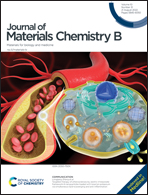Catechol sensor based on pristine and transition metal embedded holey graphyne: a first-principles density functional theory study†
Abstract
To develop a highly sensitive and selective biosensor for detecting noxious biomolecules from the environment, we examined catechol (Cc) adsorption in pristine and transition metal (TM = Sc, Cu, and Pd) embedded 2D holey graphyne (hGY) monolayers using the first-principles density functional theory method. The interaction between Cc and the pristine hGY is purely weak, and hence the response of the sensing device will be difficult to detect. Therefore, the TM doping strategy is adopted to improve the sensitivity. According to our findings, Sc binds strongly to the hGY monolayer, with a binding energy of −4.09 eV and a charge transfer of 1.89e from the valence orbitals of Sc to the C 2p orbitals. Later on, the Cc adsorption on the TM-embedded hGY was investigated. The interaction of Cc with the transition metal involves charge transfer from Cc to the metal d orbital. A large binding energy of −3.22 eV and a significant charge transfer of about 0.9e from the O 2p orbitals of Cc to the valence orbital of Sc suggest that the Sc embedded hGY monolayer is a good choice for the efficient sensing of Cc molecules. Furthermore, ab initio MD simulations confirmed the structural stability of the Sc + hGY system at room temperature. We strongly believe that this theoretical work will aid the experimentalists in designing and developing 2D semiconducting nanolayer-based biosensors for commercial purposes.



 Please wait while we load your content...
Please wait while we load your content...